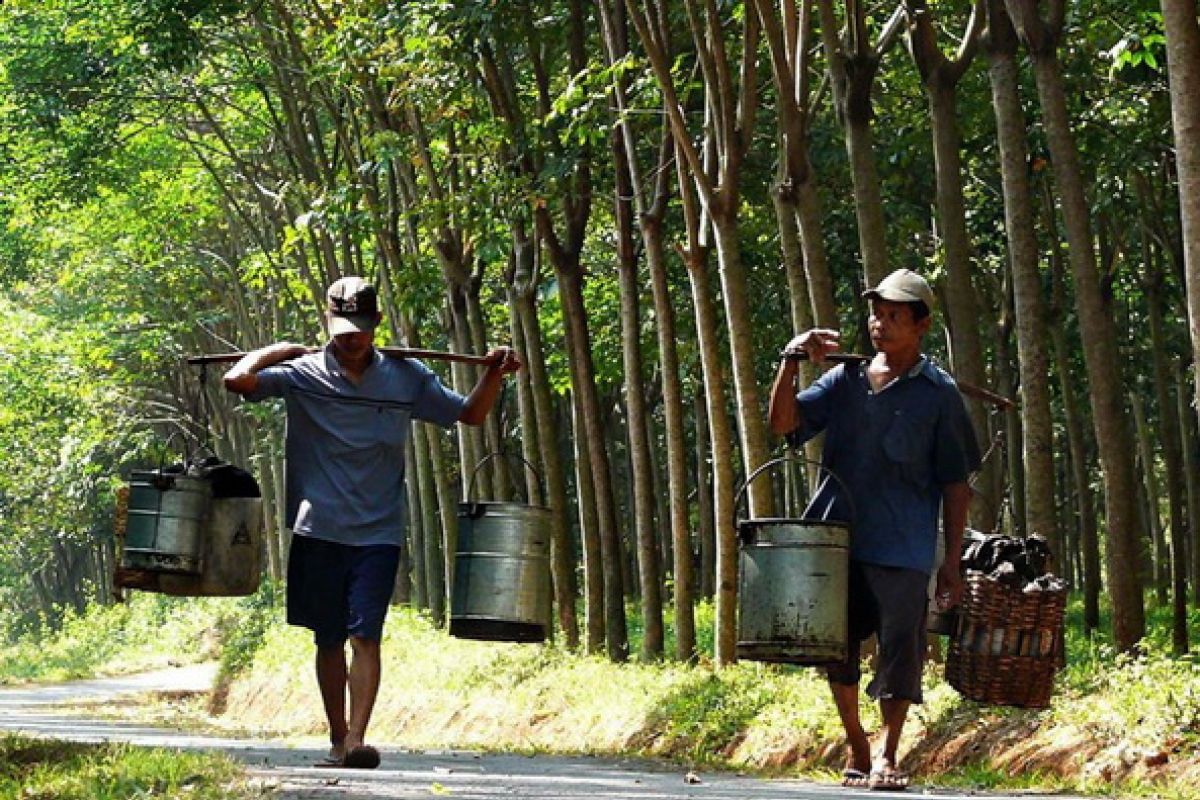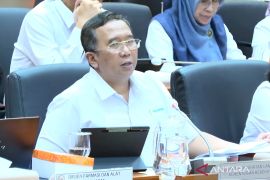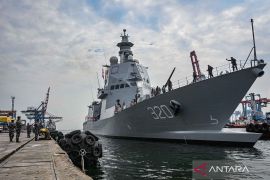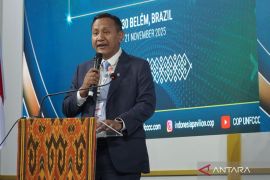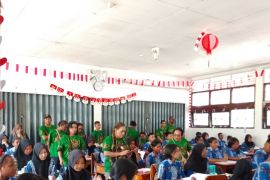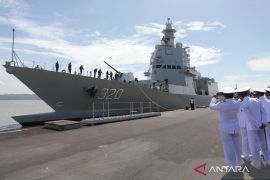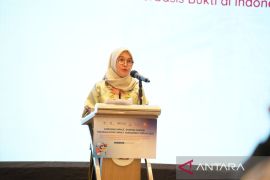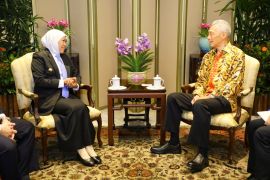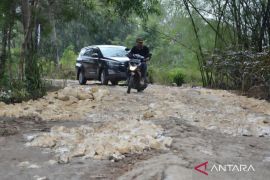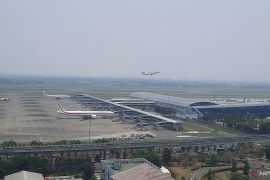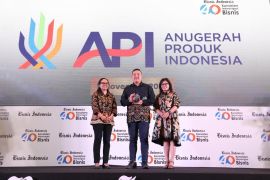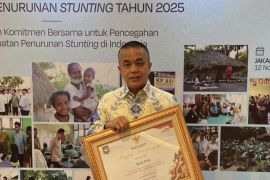After peaking at US$4 per kilogram in 2011, the price of natural rubber shrank to as low as US$1.5 per kilogram earlier this month. The price has been below the production cost.Jakarta (ANTARA News) - The price of natural rubber, which is one of the countrys major export earners, has been on the decline in the past three years.
After peaking at US$4 per kilogram in 2011, the price of natural rubber shrank to as low as US$1.5 per kilogram earlier this month.
The price has been below the production cost. The prices at the level of farmers is around Rp4,500-Rp5,000 per kilogram or not even up to a half dollar.
"In mid last month the price rose to Rp6,500 per kilogram, but it was still far from expectation amid the rising prices of other basic necessities," Halim, a rubber farmer at sub-district of Batu Benawa, regency of Hulu Sungai Tengah of South Kalimantan, said on Tuesday.
The sharp fall of the price resulted in a shrinking contribution of the commodity to the countrys earning from the exports of commodities outside oil and gas.
In 2011 , natural rubber contributed US$11.7 billion to the countrys total earning from non-oil/gas commodities, but in 2013, the contribution shrank to US$6.9 billion or a decline of around 40 percent.
Indonesia, the worlds second largest producer and supplier of natural rubber after Thailand, was greatly concerned about the market trend. The price fall was especially worrying as it hit millions of small farmers. Small farmers account for around 85 percent of the countrys rubber production.
"Many farmers live from rubber farming , therefore, we would do everything not to be discourage and change their crop," Trade Minister Rachmat Gobel said, added, they must not be too quick to make a decision to change their crop."
ITRC
Last week the minister attended a ministerial meeting of the International Tripartite Rubber Council (ITRC) in Kuala Lumpur, Malaysia.
ITRC groups three ASEAN countries - Thailand, Indonesia and Malaysia - the largest, second largest and third largest producer of natural rubber in the world.
At the meeting Gobel meet with Malaysian Minister of Farm and Commodities Datuk Amar Douglas Uggah and Thai Agriculture and Cooperative Minister Petipong Pungbun Na Ayudya.
The three countries account for 67 percent of the world production of natural rubber and for 79 percent of the worlds exports of that commodity.
Based on data from IRSG (International Rubber Study Group) processed by the Indonesian Association of Rubber Companies (Gapkindo) the worlds production of natural rubber reached 12 million metric tons in 2013, and the three ASEAN countries accounted for 8 million tons of the total production -- Thailand (4.14 million ton), Indonesia (3.08 million tons), and Malaysia (824,000 tons).
The worlds consumption of natural rubber totaled 11 million tons that year .
The surplus in supply caused the price fall prompting ITRC member countries to regulate exports to the world market.
Unfortunately, not all members of ITRC fully complied with their agreement on export retention resulting in price falling out of control in the past three years.
There are other major producers among other ASEAN countries such as Cambodia, Laos, Myanmar and Vietnam, (CLMV) together with a market share of 10 percent.
"The presence of CLMV representatives at the ITRC meeting was a signal that they want to form a synergy," Datuk Amar Douglas Uggah, who chaired the meeting, said .
Earlier Vietnam was reported planning to join ITRC.
At the meeting the three worlds largest producers agreed to cut exports such as by increasing 10 percent their domestic consumption of natural rubber. They also agreed to regulate rubber planting with the scheme of supply management scheme (SMS) in 2015-2020.
"We also ask IRCo (International Rubber Consortium) to increase their role ," Datuk Amar said.
At the ministerial meeting the member countries also agreed to form Regional Rubber Market to improve the market and create an effective hedging system that would mutually be beneficial for both the producers and consumers including the market players.
"We hope in 10 months the regional rubber market would be a reality," Datuk Amar said
Going downstream
Originally the ITRC ministerial meeting was scheduled for 12 December 2014, but the market slump and plunging prices prompted them to hold the meeting earlier.
As Rachmat Gobel said Indonesia was concerned about the fate of its 2.4 million rubber farmers, who depend much on the international rubber trade.
"Anything has to be done to improve the market condition such as by export retention," he told ANTARA News on his way back to Jakarta on board an aircraft from Kuala Lumpur.
He said the ITRC agreement was the best that could be done to shore up the market and raise the price by phases.
"Domestic consumption of natural rubber would be increased by building rubber based factories . I will discuss development of downstream rubber industries with the industry minister," he said.
He said based on Thai experience, natural rubber could be utilized in road construction and other construction projects . In addition natural rubber has been used widely as basic material in tire and hand glove industries and for automotive components and condoms
Indonesia agrees with the agreement to increase domestic consumption of natural rubber as it is in line with the government policy to boost development of downstream industry, he said.
"In the future, Indonesia has to increase exports of manufactured goods and reduce exports of primary commodities or raw materials," he said
Meanwhile, Deputy Chairman of Gapkindo Moenardji said currently the country has not made much progress in expanding rubber-based industries. Only around 500,000 tons of the countrys total production of 3.2 million tons of natural rubber expected this year, are used to feed domestic industries . The rest are exported. .
"There are few downstream rubber factories in the country. In Indonesia there has been no regulation to use rubber for earthquake resistant construction such as for building and road construction," Moenardji said.
However, he was confident the ITRC agreement to raise domestic rubber consumption 10 percent could be implemented in Indonesia.
"Currently there are big investment being planned in the country including new tire factories ," he said .
He said he hoped that development of downstream rubber industry could be boosted that the rubber farmers would not depend much on export market .
So far most of the countrys production of natural rubber has been exported to the United States, China and Japan.(*)
Reporter: Rrisbiani Fardaniah
Editor: Heru Purwanto
Copyright © ANTARA 2014
